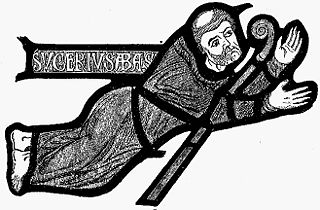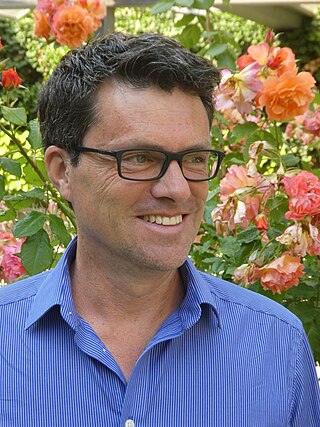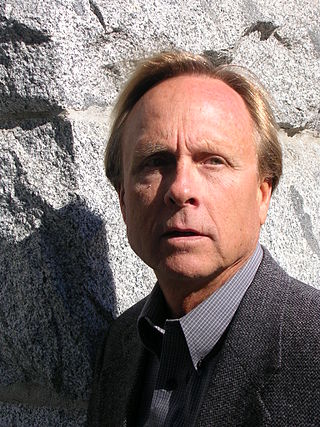
Romanesque architecture is an architectural style of medieval Europe that was predominant from in the 11th and 12th centuries. The style eventually developed into the Gothic style with the shape of the arches providing a simple distinction: the Romanesque is characterized by semicircular arches, while the Gothic is marked by the pointed arches. The Romanesque emerged nearly simultaneously in multiple countries ; its examples can be found across the continent, making it the first pan-European architectural style since Imperial Roman architecture. Similarly to Gothic, the name of the style was transferred onto the contemporary Romanesque art.

Gothic architecture is an architectural style that was prevalent in Europe from the late 12th to the 16th century, during the High and Late Middle Ages, surviving into the 17th and 18th centuries in some areas. It evolved from Romanesque architecture and was succeeded by Renaissance architecture. It originated in the Île-de-France and Picardy regions of northern France. The style at the time was sometimes known as opus Francigenum ; the term Gothic was first applied contemptuously during the later Renaissance, by those ambitious to revive the architecture of classical antiquity.

The Basilica of Saint-Denis is a large former medieval abbey church and present cathedral in the commune of Saint-Denis, a northern suburb of Paris. The building is of singular importance historically and architecturally as its choir, completed in 1144, is widely considered the first structure to employ all of the elements of Gothic architecture.

Suger was a French abbot, statesman, and historian. He once lived at the court of Pope Calixtus II in Maguelonne, France. He later became abbot of Saint-Denis, and became a close confidant to King Louis VII, even becoming his regent when the king left for the Second Crusade. Together with the king, he played a part in the centralization in the growing French Kingdom. He authored writings on abbey construction and was one of the earliest patrons of Gothic architecture and is seen as widely credited with popularizing the style.

The flying buttress is a specific form of buttress composed of an arch that extends from the upper portion of a wall to a pier of great mass, in order to convey to the ground the lateral forces that push a wall outwards, which are forces that arise from vaulted ceilings of stone and from wind-loading on roofs.

An archivolt is an ornamental moulding or band following the curve on the underside of an arch. It is composed of bands of ornamental mouldings surrounding an arched opening, corresponding to the architrave in the case of a rectangular opening. The word is sometimes used to refer to the under-side or inner curve of the arch itself. Most commonly archivolts are found as a feature of the arches of church portals. The mouldings and sculptures on these archivolts are used to convey a theological story or depict religious figures and ideologies of the church in order to represent the gateway between the holy space of the church and the external world. The presence of archivolts on churches is seen throughout history, although their design, both architecturally and artistically, is heavily influenced by the period they were built in and the churches they were designed for.
Francis Christopher Oakley is the former Edward Dorr Griffin Professor of the History of ideas at Williams College, President Emeritus of Williams College and President Emeritus of the American Council of Learned Societies, New York. He also served as Interim Director of the Sterling and Francine Clark Art Institute.

Rose window is often used as a generic term applied to a circular window, but is especially used for those found in Gothic cathedrals and churches. The windows are divided into segments by stone mullions and tracery. The term rose window was not used before the 17th century and comes from the English flower name rose.
The University of Chicago Divinity School is a private graduate institution at the University of Chicago dedicated to the training of academics and clergy across religious boundaries. Formed under Baptist auspices, the school today lacks any sectarian affiliations.

Early Gothic is a term for the first phase of Gothic style, followed by High Gothic and Late Gothic, dividing the whole Gothic era into three periods. It is defined as a style that used some principle elements of Gothic, but not all. Especially, it had no fine tracery. It marks the first phase of a division of Gothic Style into three periods. If it is used for all countries, it has to be regarded that there may be special terms for the styles of single countries, such as Early English in England.

Gauvin Alexander Bailey is an American-Canadian author and art historian. He is Professor and Alfred and Isabel Bader Chair in Southern Baroque Art at Queen's University.
Barbara Greenhouse Lane (1941-2023) was an art historian, and chair of the art department in the graduate studies and research program at Queens College, City University of New York. She was a scholar of the Northern Renaissance, early Netherlandish painting, and medieval art.
Lindy M. Grant,, is professor emerita of medieval history at the University of Reading, an honorary research fellow of the Courtauld Institute of Art, and a former president of the British Archaeological Association. Grant is a specialist in Capetian France and its neighbours in the 11th to 13th centuries.

Conrad Rudolph is an American art historian. He is Distinguished Professor of Medieval Art History at the University of California, Riverside. He is an elected Fellow of the Medieval Academy of America, and has received fellowships and grants from the Guggenheim, J. Paul Getty, Mellon, and Kress foundations, as well as from the National Endowment for the Humanities and the College Art Association. He has served on the board of editors/advisors of or acted as consultant for several academic journals and university presses.

Gothic cathedrals and churches are religious buildings created in Europe between the mid-12th century and the beginning of the 16th century. The cathedrals are notable particularly for their great height and their extensive use of stained glass to fill the interiors with light. They were the tallest and largest buildings of their time and the most prominent examples of Gothic architecture. The appearance of the Gothic cathedral was not only a revolution in architecture; it also introduced new forms in decoration, sculpture, and art.
Roger Andrew Stalley is a scholar and teacher in medieval architecture and sculpture. His speciality is Early Gothic and Romanesque architecture and sculpture in England and Western Europe with a particular focus on Irish architecture and art. He has published numerous papers and books including Cistercian Monasteries of Ireland in 1987, for which he was awarded the Alice Davis Hitchcock Medallion in 1988 by the Society of Architectural Historians of Great Britain, and Early Medieval Architecture in 1999 for the Oxford History of Art series. He is noted for his innovative teaching practices for example, The Medieval Architecture Online Teaching Project, and is recognised in the 2021 publication Mapping New Territories in Art and Architectural Histories, Essays in Honour of Roger Stalley.
Carolyn Marino Malone is an American medievalist and academic. She is professor of art history and history at USC Dornsife College, Los Angeles, California, with a PhD in Art History and Medieval Studies (1973) from the University of California, Berkeley. Her research interests are English and French Romanesque and Gothic architecture and sculpture. She has published books on sculptural finds at Canterbury Cathedral, the abbey of St Bénigne in Dijon, the façade of Wells Cathedral, and monastic life in the Middle Ages. She served as Vice-President (1996-1997) and President (1999) of Art Historians of Southern California; Domestic Advisor to the Board of Directors of the International Center of Medieval Art (1984-1987); and was on the board of directors of the Medieval Association of the Pacific (1986-1989). She is a member of the Society of Architectural Historians.

The Gothic style of architecture was strongly influenced by the Romanesque architecture which preceded it. Why the Gothic style emerged from Romanesque, and what the key influences on its development were, is a difficult problem for which there is a lack of concrete evidence because medieval Gothic architecture was not accompanied by contemporary written theory, in contrast to the 'Renaissance' and its treatises. A number of contrasting theories on the origins of Gothic have been advanced: for example, that Gothic emerged organically as a 'rationalist' answer to structural challenges; that Gothic was informed by the methods of medieval Scholastic philosophy; that Gothic was an attempt to imitate heaven and the light referred to in various Biblical passages such as Revelation; that Gothic was 'medieval modernism' deliberately rejecting the 'historicist' forms of classical architecture. Beyond specific theories, the style was also shaped by the specific geographical, political, religious and cultural context of Europe in the 12th century onwards.
Stephen D. Murray, Professor Emeritus of the Department of Art History and Archaeology at Columbia University, is an architectural historian, specialising in Romanesque and Gothic architecture. Before his retirement, Murray held the Lisa and Bernard Selz chair in Medieval Art History at Columbia University. He has written several important monographs on French Gothic cathedrals, including Troyes, Beauvais, and Amiens. His work combines analysis of architectural details with discussion of medieval writing about cathedrals. He is considered a pioneer in the development of digital media and visual arts resources for educational use.
Achim Timmermann is a professor, specialising in Medieval and early modern art and architecture. He is Director of Medieval and Early Modern Studies at the University of Michigan, Ann Arbor.












